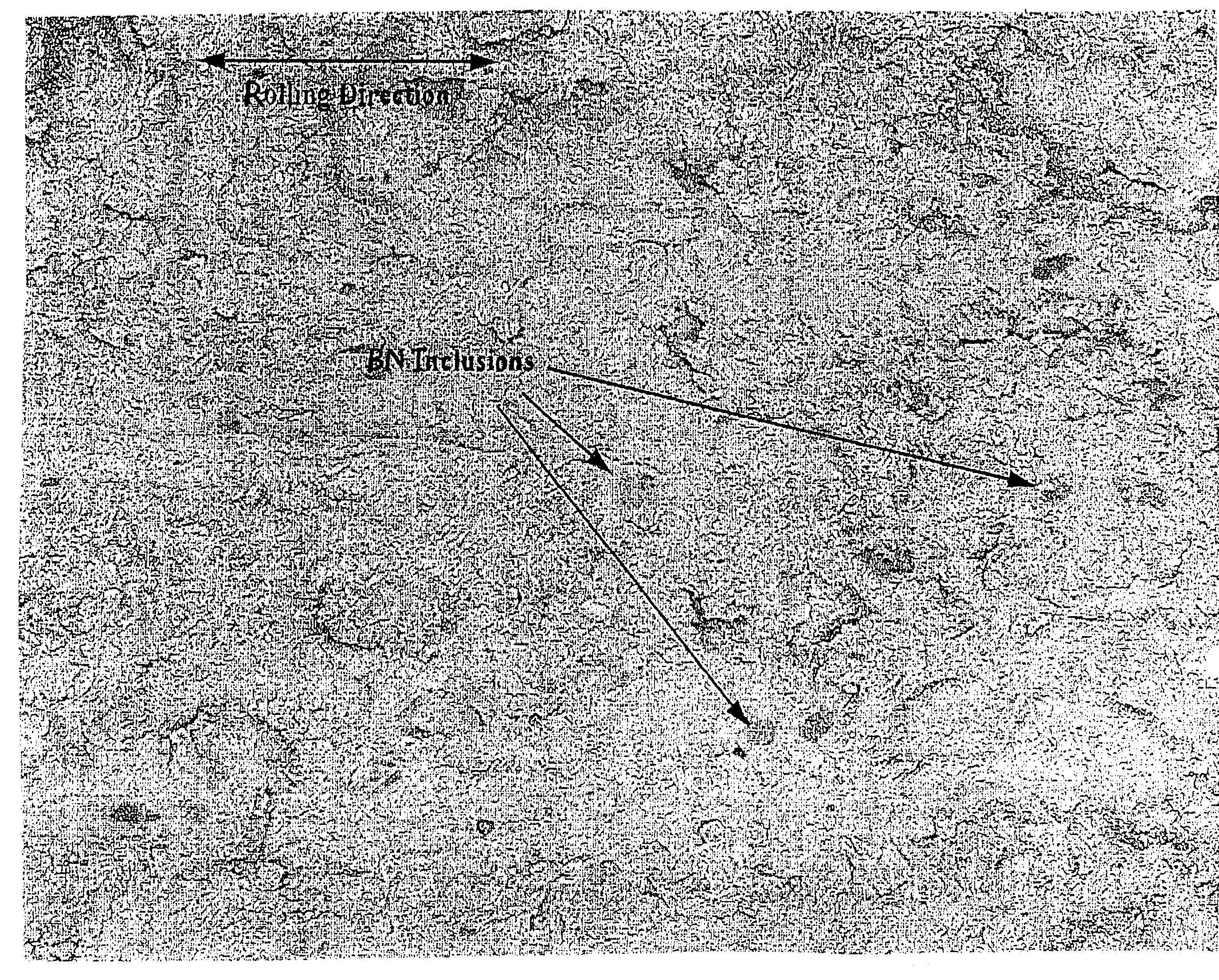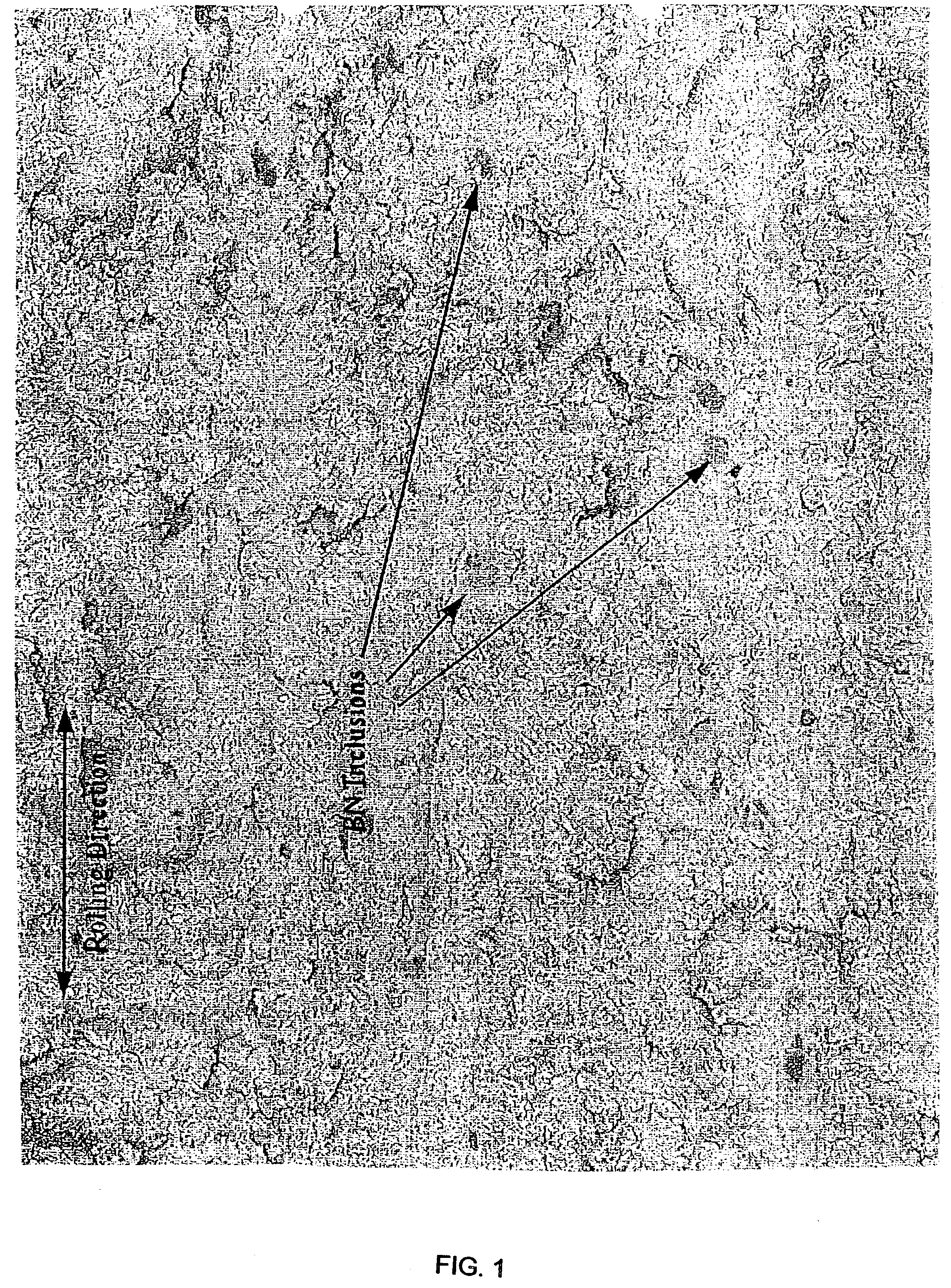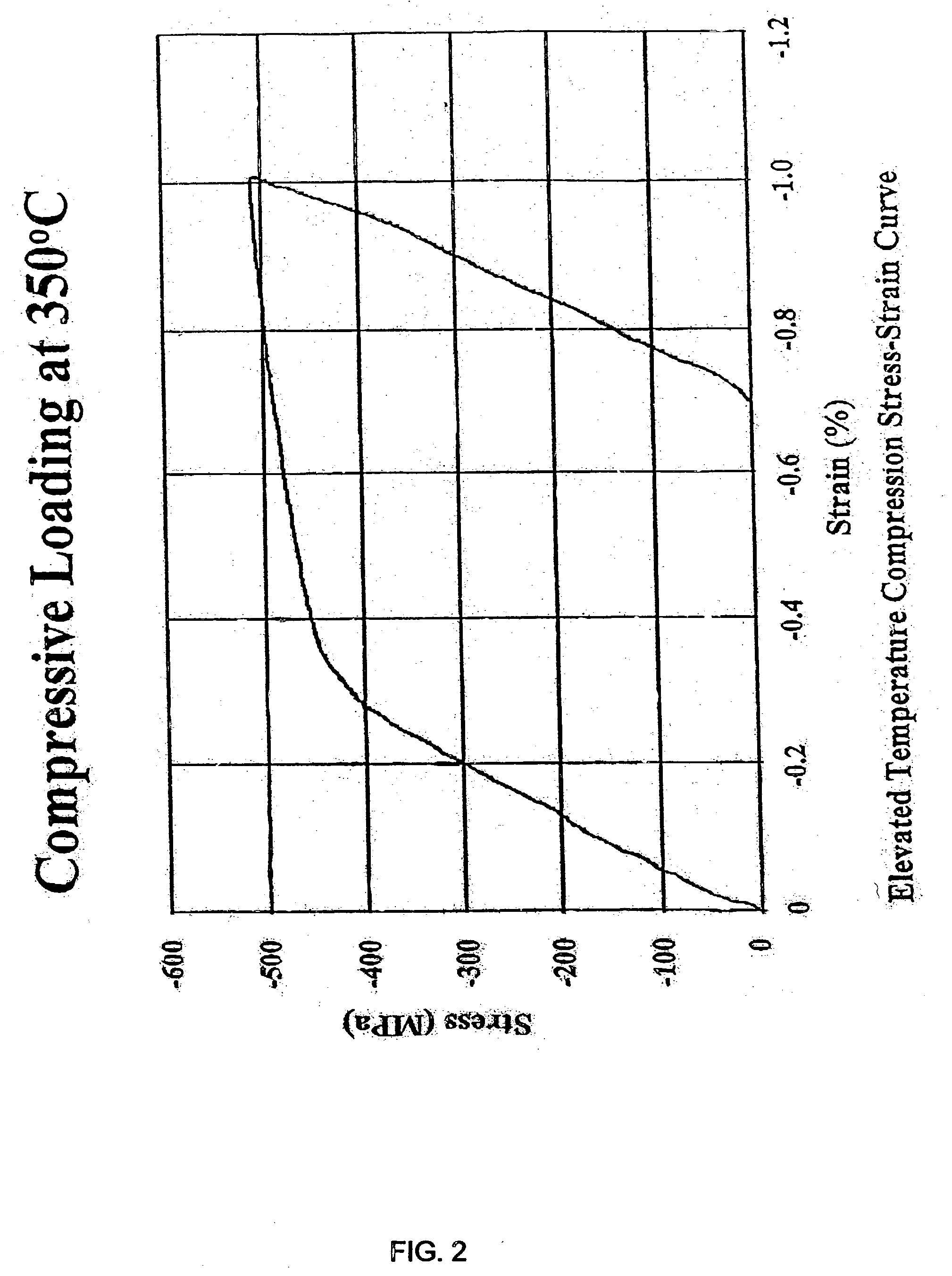Hydrogen-induced-cracking resistant and sulphide-stress-cracking resistant steel alloy
a technology of sulphide stress and steel alloy, which is applied in the field of sulphide stress and sulphide stress steel alloy, can solve the problems of tensile load, deterioration of casing, and sourness of older wells over their production lifetim
- Summary
- Abstract
- Description
- Claims
- Application Information
AI Technical Summary
Problems solved by technology
Method used
Image
Examples
Embodiment Construction
[0022] Conventional steel-making techniques known in the industry including clean scrap melting practices may be used to make an alloy falling within the scope of the invention once the chemistry is known. The product of clean scrap melting frequently contains low concentration of benign alloying elements, trace amounts of miscellaneous elements, some of which may have deleterious effects, and minor alloying elements.
[0023] It was well known prior to the present invention that other benign alloying elements might be added to alloys of the present general type without interfering with the metallurgical objectives of the present invention. Examples of such benign alloying elements are nickel, copper, aluminum and silicon. By controlling the concentration of these alloying elements, one can realize a benefit in the alloy. Accordingly, these may be referred to as minor alloying elements or benign alloying elements depending upon he concentration. For example, copper may be found in conc...
PUM
| Property | Measurement | Unit |
|---|---|---|
| Fraction | aaaaa | aaaaa |
| Fraction | aaaaa | aaaaa |
| Fraction | aaaaa | aaaaa |
Abstract
Description
Claims
Application Information
 Login to View More
Login to View More - R&D
- Intellectual Property
- Life Sciences
- Materials
- Tech Scout
- Unparalleled Data Quality
- Higher Quality Content
- 60% Fewer Hallucinations
Browse by: Latest US Patents, China's latest patents, Technical Efficacy Thesaurus, Application Domain, Technology Topic, Popular Technical Reports.
© 2025 PatSnap. All rights reserved.Legal|Privacy policy|Modern Slavery Act Transparency Statement|Sitemap|About US| Contact US: help@patsnap.com



